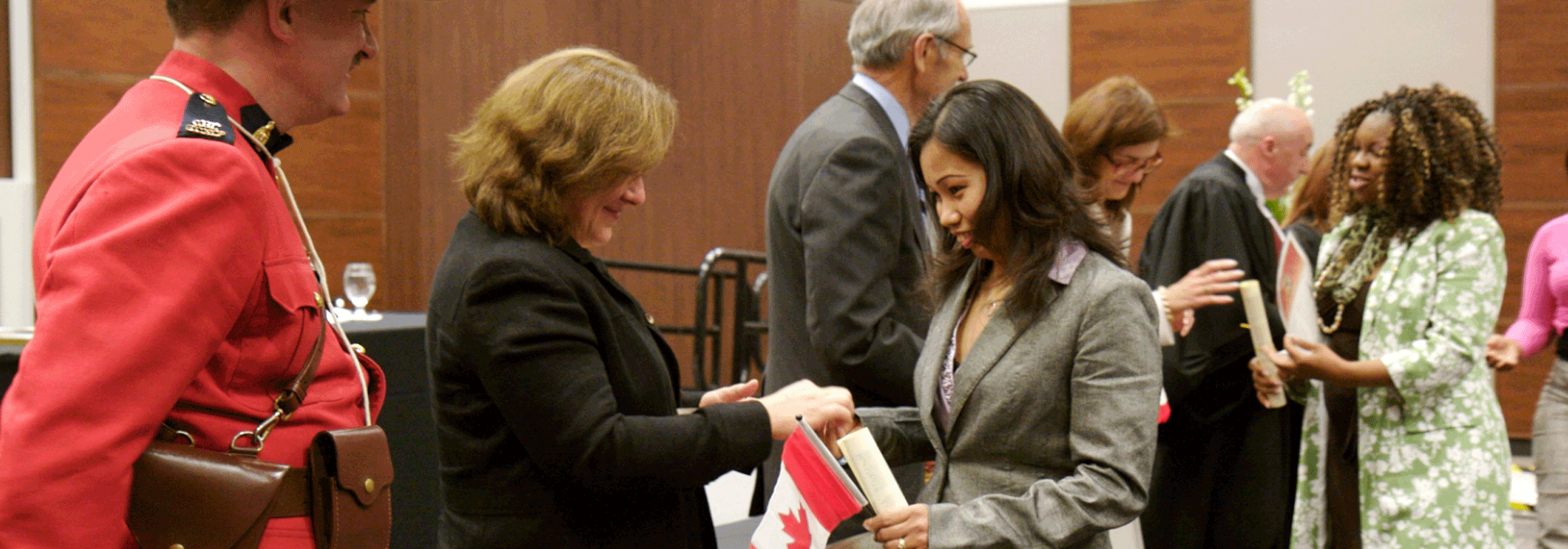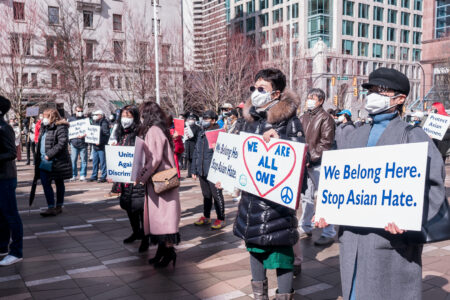
In August, 2015, I wrote an article for the Policy Options magazine on what the results of the October 19, 2015, federal election would mean for Canadian immigration policy. Although the article was published in September, at the time that I submitted the article to Policy Options Prime Minister Stephen Harper had not yet asked the Governor General to dissolve Parliament, and the parties had yet to begin formally campaigning. With the election now three days away, I thought it would be interesting to update my predictions on what the 42nd Canadian federal election would likely mean for Canadian immigration policy.
I continue to believe that Monday’s election will likely be a pivotal event for Canadian immigration policy. The Conservative Party of Canada during its time in office has comprehensively overhauled Canada’s immigration system both legislatively as well as operationally. Monday’s election will likely determine whether many of its changes become permanent, or are undone, or whether immigration policies go in a completely different direction.
In order to understand the possible consequences of the upcoming election on immigration policy we have to understand how much things have changed. Indeed, it is not uncommon for immigration practitioners to jokingly refer to the Immigration and Refugee Protection Act as the “Jason Kenney Immigration and Refugee Protection Act.”
Arguably the most significant change to the immigration system was its transformation from a system where people were immediately admitted to Canada from overseas as permanent residents into one where prospective immigrants had to “prove” that they could establish themselves in Canada, economically, by initially being temporary foreign workers and then transitioning to permanent residency. While in the long run this change should ensure that immigrants are gainfully employed and should end the recognition-of-foreign-credentials debacle, it has also contributed to a significant and controversial increase in the number of temporary foreign workers in Canada, many of whom work in what the government deems “lower-skilled” positions and are ineligible for permanent residency.
An equally important change to Canada’s immigration system was the transferring of much of the responsibility for creating and managing Canada’s immigration programs from Parliament directly to Citizenship and Immigration Canada (CIC) and what is now Economic and Social Development Canada (ESDC). Through what are known as ministerial instructions, CIC and ESDC can create immigration programs, revoke them, determine the order in which applications are processed, introduce application intake caps, and even refuse to process applications in existing programs, all with minimal parliamentary oversight.
Refugee lawyers who practiced before the Conservatives assumed office in 2006 would find the current refugee determination process, and the nature of their business, almost unrecognizable. Previously, refugee claims took an average of over 1,000 days to process, and claimants from all countries were treated equally. Now those claims take 30 to 45 days for claimants from countries the government has deemed “safe” and 216 days for other claimants. This, as well as the elimination of access to work permits (and briefly health care) for many refugee claimants, has caused the number of asylum seekers in Canada to plummet. During the same period, the Canada Border Services Agency (CBSA) has aggressively pursued a policy of initiating cessation applications against protected persons if they allegedly re-avail themselves of the protection of their country of origin. Indeed, in 2013 it emerged that the CBSA had a target of 875 such applications, which can lead to loss of permanent resident status and removal, per year.
The Conservatives’ attempt to strip certain people of their status in Canada does not end with refugees. Between 1977 and 2010, only 63 people had their Canadian citizenship revoked. In 2012, the Government of Canada announced that over 11,000 investigations that could lead to revocation for misrepresentation were underway. In 2014, the Conservatives passed legislation allowing for the revocation of Canadian citizenship among citizens convicted of certain serious offences, such as terrorism and treason, if doing so would not render them stateless. This threat extends, for the first time, to those born in Canada. Indeed, on September 30, 2015, during the midst of the election campaign, the Government of Canada revoked the citizenship of Zakaria Amara, the ringleader of the “Toronto 18.”
A perhaps equally important change to Canadian citizenship law was the decision to limit citizenship by descent to the first generation born abroad, a response to the government’s 2006 evacuation of Canadian citizens living in Lebanon who seemingly had minimal ties to Canada. Although this restriction has generated far less media attention than the Citizenship Act’s new revocation provisions, it has detrimentally affected many more people.
These are only the most significant changes. Supporters of Canada’s various political parties will likely form strong opinions on how they would like to see their respective party either maintain or change aspects of the above. But what will the parties actually do?
As before, I am not going to attempt to distinguish what will happen in minority or majority governments. Whether a party has sufficient seats in Parliament to pass its legislation without the assistance of other parties may not matter in most immigration issues. The Conservatives actually initiated many of their changes while governing as a minority, and, as a result of the ability of CIC and ESDC to bypass Parliament through the issuance of ministerial instructions any government will be able to significantly change Canada’s immigration system. On this point, it is important to note that during the election campaign neither the Liberals nor the NDP promised to reverse the transfer of power from Parliament to government departments, and ministerial instructions appear to be here to stay.
The Conservatives Continue to Govern
Given the comprehensiveness of the Conservatives’ overhaul so far, one could be forgiven for thinking that a continued Conservative government would result in the continuance of the status quo. Their election platform certainly suggests this. It contains just three commitments on immigration, those being to (1) continue to make the immigration system faster, flexible, and more responsive to the needs of Canada’s economy, (2) continue to be a world leader in refugee protection (a controversial statement to say the least, especially given the scrutiny that Canada’s refugee policy received during this campaign following the death of Alan Kurdi), and (3) increasing the intake of applications for the parents and grandparents sponsorship program when processing times decrease.
However, the Conservatives have yet to fully implement many of their reforms. Once their recently enacted legislation and ministerial instructions start fully baring their teeth, if they are re-elected Canada’s immigration system will look even more different from how it looked a decade ago.
These “Conservative teeth” include fining employers who breach the requirements of Canada’s foreign worker programs; requiring previously visa-exempt foreign nationals to obtain electronic permission to enter Canada; requiring all foreign nationals who do require visas to provide their biometric information to CIC; completely removing humanitarian and compassionate consideration for permanent residents convicted of serious crimes; and cracking down on international students who are not working toward completing their studies.
Under a renewed Conservative government efficiency in admitting and removing foreign nationals will continue to be paramount. The economic streams will likely continue to be prioritized over the family reunification streams.
From a legacy perspective, another Harper government is likely to continue to make new free trade agreements a priority. Indeed, during the election campaign it signed the Trans Pacific Partnership (TPP). Such agreements are significant from an immigration perspective, as they almost always provide for the temporary entry of businesspeople and foreign workers. Although its full text has not yet been released, the TPP appears to be no exception. Each new free trade agreement that Prime Minister Harper signs and ratifies will restrict a future government’s ability to reduce the number of foreign workers in Canada.
There are two other areas in which the Conservatives have hinted at making further changes, although they have not yet acted on them. The first is abolishing birthright citizenship, which provides that anyone born in Canada is automatically a Canadian citizen. The second could be to address an apparent growing frustration with Quebec’s Immigrant Investor Program, even though the corresponding federal program has been closed. There is little evidence that the Conservatives will actually act on either of these issues, but if they do, it would be momentous.
The NDP Forms Their First Government
In previous election campaigns the NDP has generally promised that it will maintain economic immigration levels and facilitate family reunification. Indeed, during the 2011 federal election the NDP platform contained a promise to introduce a Once in a Lifetime Act that would allow every Canadian to sponsor one relative from overseas. If enacted, this could conceivably double or triple Canada’s population in a very short time.
In September I wrote that if the NDP forms government it will either abandon some of the commitments that it traditionally makes during this election campaign, accept that its programs will have massive processing times that will make current processing times seem fast, introduce a lottery or application cap system, or be prepared to explain to the Canadian public why Canada’s population should increase so dramatically. During the election campaign I was proven right, as the NDP did not mention the Once in a Lifetime Act once, including in its platform, seemingly abandoning this traditional pillar of their immigration policy.
The NDP did, however, commit to removing the cap on parent and grandparent sponsorships and increasing resources to reduce backlogs. If the NDP were to follow through with this, it would lead to a dramatic increase in elderly immigration to Canada.
As I predicted, and as far as I can tell from its election platform, Canada’s economic immigration programs under an NDP government would continue to be a system where individuals arrive in Canada first as foreign workers and then transition to permanent residency. An NDP government would, however, create a pathway to permanent residency for all foreign workers. They would also review the Temporary Foreign Worker program, although presumably all governments constantly review their programs.
An NDP government, will also re-emphasize the importance of humanitarian and compassionate considerations in temporary and permanent residency programs, re-allocate resources towards the family reunification streams, and revoke the new citizenship revocation provisions. Although they did not mention it during the campaign, the NDP will also likely stop initiating cessation applications against refugees.
While in opposition, the NDP, and especially its British Columbia Member of Parliament Don Davies, has consistently criticized CIC’s practice of issuing minimal reasons in visa refusal letters. CIC got away with doing this under both the Liberals and the Conservatives, and if the NDP fulfilled its promise to require immigration officers to provide the full reasons for refusal, it would be a subtle, simple change that would dramatically increase the fairness of Canada’s immigration system.
Davies has also called on the Government of Canada to block former US vice-president Dick Cheney from entering Canada. If one had to predict a bold move on Canadian immigration policy the NDP could make to satisfy its base that doesn’t involve increasing immigration levels, it might be to announce that many individuals from the former Bush Administration will no longer be welcome in Canada.
The Liberals Assume Office
During the 2011 election, the Toronto Star described the Liberal Party of Canada’s lack of an immigration policy vision as “baffling.” The Liberal immigration critic at the time was Justin Trudeau. In August I wrote that “Trudeau is now the Leader of the Opposition, and, despite the best efforts of the current Liberal immigration critic, John McCallum, as of writing there is a similar lack of clarity leading into this election.”
The election campaign proved me wrong. The Liberal platform’s immigration commitments are incredibly specific. They did, however, prove me correct when I wrote that the Liberals were unlikely to make any substantive legislative changes to Canada’s immigration system. The Liberals for the most part appear committed to tinkering with the Conservative reforms of the past decade, not departing from them. The Liberals appear to have welcomed an immigration system that admits people first as temporary foreign workers and then transitions them to permanent residence. On refugee policy, they will maintain the designated country of origin system, but merely change how countries are determined “safe.”
The Liberals also appear to have completely embraced an immigration system that features application intake management systems. Unlike the NDP, and like the Conservatives, the Liberals are only committing to increasing the cap on parents & grandparents, rather than abolishing it. There is even an express commitment to keeping Express Entry, with the slight modification of additional points for those with siblings in Canada. Indeed, as I immediately tweeted upon reading the Liberal platform, there is very little in the Liberal platform that should prevent the Liberals from getting Conservative support should the Liberals form a minority government.
There are, however, notable exceptions to this. The Liberals in their platform have committing to restoring the maximum age for dependents to 22 instead of 19, ending conditional permanent residency to Canadians who apply to sponsor foreign national spouses who they have been married to for less than 3 years, and repealing the new citizenship revocations.
There are other significant ways in which Canada’s immigration system would look different under the Liberals than it has under the Conservatives. It is difficult to envision the Liberals under Trudeau introducing minimum annual targets for how many refugees should be stripped of their status, or detaining children who arrive as part of mass irregular arrivals. Conversely, it is easy to see the Liberals unwinding Conservative changes that prohibit the consideration of humanitarian and compassionate considerations in many application streams and removing the discretion of immigration officers to defer removal.
In an election campaign that has revealed that many of Jason Kenney’s reforms are here to stay, at least for a while, I continue to believe that perhaps the most significant difference between a Liberal or an NDP government and the current Conservative one will be a definitive and important change in tone. As long as the next government does not try to deny health care to refugee claimants or prohibit Muslim women from wearing the niqab to citizenship ceremonies, the consequences of the upcoming election will seem like a very big shift indeed.
Photo: mars_discovery_district / Some rights reserved







